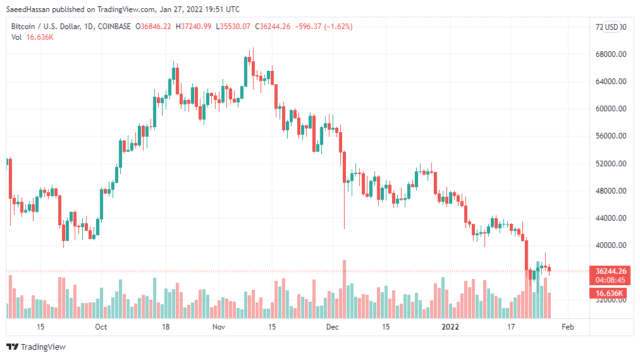Cryptocurrencies have become the most preferred proceed for fraudsters and criminals due to their anonymity, ease of access, and ability to cross borders. Similarly, cybercrimes in the crypto-space are also increasing rapidly.
A report issued by Chainalysis on Wednesday, Jan 26, 2022, stated: Cybercriminals are finding new ways to make money hand-over-fist, with cryptocurrency laundered last year at an estimated $8.6 billion – up 30% from 2020. Additionally, cybercriminals targeted cryptocurrency exchanges and managed to launder more than $33 billion in cryptocurrencies since 2017.
ChainAnalysis added that considering the rapid growth of both legitimate and illegal companies, a quick rise in money laundering shouldn’t be surprising.
Money laundering in digital assets refers to the process of changing the origin of a worth, obtained illegally, and then transferring it into legit financial firms to cash out money.
The research reveals nearly 17% of laundered 8.6 billion was moved into the decentralized finance applications, referring to the business companies facilitating crypto payments.
While in the previous year, only 2% of laundered money was transferred to decentralized business models.
As per the report, several mining pools, high-risk exchanges, and the mixers also noted a significant increase in the values sent by illicit wallet addresses. Mixers combine legal or tainted crypto funds with others and conceal the trail of funds so that no one can trace the origin of an asset.
Crypto Money Laundering reached $8.6 Billion Last Year
Furthermore, online criminals have transferred more than half of stolen money (up to $750 million) to decentralized finance applications.
The laundered worth of 8.6 billion last year represents that crypto-native crimes such as ransomware attacks or darknet market sales’ funds are in crypto instead of paper currency, said ChainAnalysis.
One of the ways that criminals make money is by converting it into cryptocurrency and then laundering this through various transactions.
In its report, Chainalysis said: “It is more difficult to measure how much fiat currency derived from off-line crime – traditional drug trafficking, for example –is converted into cryptocurrency to be laundered. However, we know anecdotally this is happening.”
Seeing the increase in crypto-native crimes, the South Korean government has imposed Travel Rule on the crypto exchanges and wants them to partner with local banks. So, they can set an eye on the fraudsters and money launders.
The crypto sector is booming, but it’s not just the digital currency itself that has grown. Cybercrimes are also on the increase, and now global companies in this industry will need to be prepared for what comes next.
Featured image from Pixabay, chart from TradingView.com


